Indian Railways food and its regional makeover: will the gamble pay off? - The Hindu

On the rare occasion that I travel by train nowadays, the insipid food — watery, salty lentils, limp chapatis and under-seasoned curries with an acidity-inducing film of chilli red oil floating on top — invariably reminds me of a long-ago meal on Rajdhani Express from Howrah to New Delhi circa 1996.
I was only 10 and yet I distinctly remember the details: how the air inside the AC 2-tier compartment was heavy with the mingled smells of rexine, sweat and disinfectants; the incredibly tall man who poured tomato soup into paper cups from a massive kettle and the hard, carom-seed studded breadsticks that came with it. For dinner, you could choose between Indian and Continental. I picked the latter and feasted on crumb-fried fish, a roast chicken with a few strands of noodles floating in the gravy, bread, boiled vegetables, and a couple of thick-cut finger chips. It was sublime. And yet, as my grandfather would point out, just a shadow of what railway food used to be.
Food has been an integral part of the romance of train journeys. I have often wondered what makes eating on a train special? Is it the changing scenery, the excitement of the journey, the motley company, or simply the novelty? Or is it the fact that eating plays the role of a tangible tether in the face of the uncertainly of mobility? Once upon a time it was simply the promise of great food, it seems.
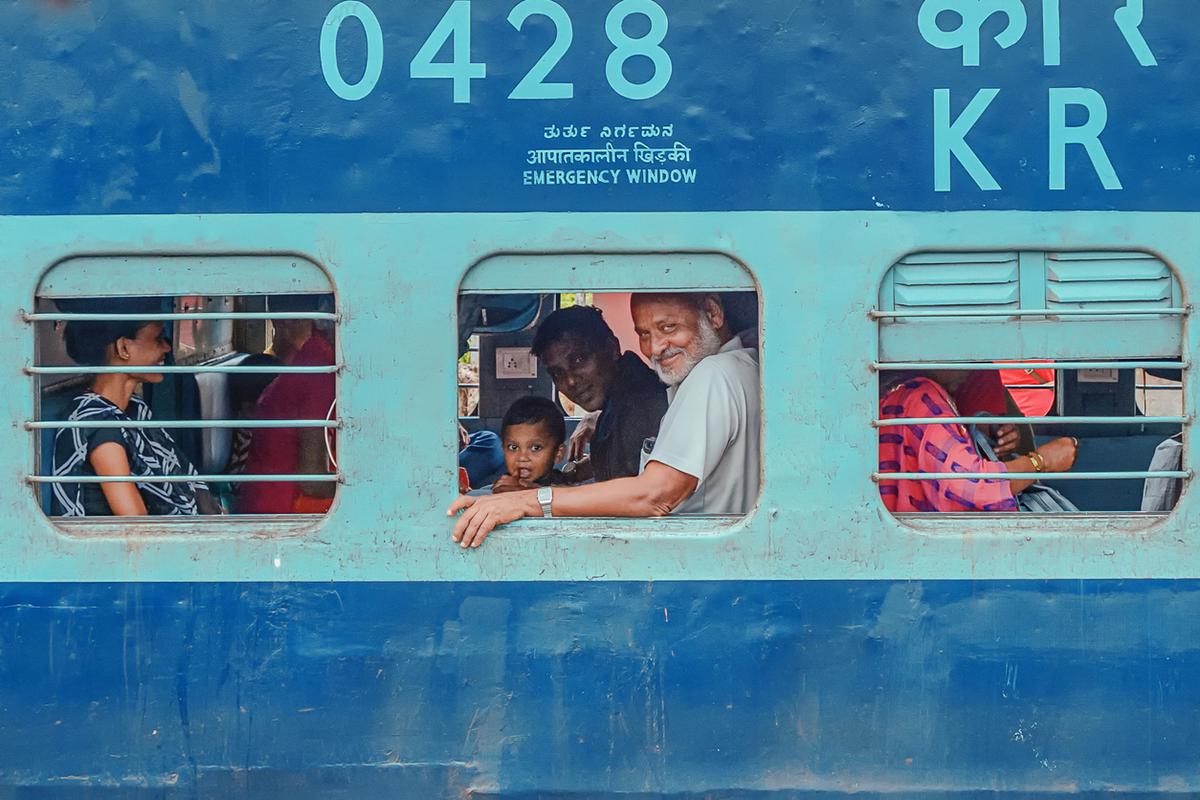
Of memorable train journeys with family. | Photo Credit: Getty Images
Back in the days of the Raj, brightly-lit restaurant train cars with tables tastefully laid out with cutlery, side plates and folded napkins, were waited upon by turbaned bearers smartly kitted out in spotless white chapkans. Railway caterers like G.F. Kellner & Co., Spence & Co. (who later acquired the former) and Sorabji & Co. dished out Anglo-Indian favourites — delicate chicken sandwiches, mulligatawny soup, mince cutlets and fish fry, chicken roasts and the iconic railway lamb curry, often served with rice and mango chutney.
With its refreshment rooms at stations and dining cars (separate for Indians, including some serving food according to caste and religious restrictions of both Hindus and Muslims) and limited but toothsome menu, the railways had created its own food culture and a unique genre of cooking.
Legendary fare and passenger favourites
This food culture survived at least for a while after the British left. Food historian Pritha Sen writes in her article, ‘Railway Food: If It’s Kanpur It Must Be Bedmi Aloo’, about elaborate dishes of the 70s, such as chicken a la bomb — ‘a huge sphere of minced chicken and mashed potatoes’ — that was a BNR (erstwhile Bengal-Nagpur Railway) favourite, au gratin and mutton collar with mint sauce, and dining cars with tables for four covered with faux damask and laid out with embossed cutlery.
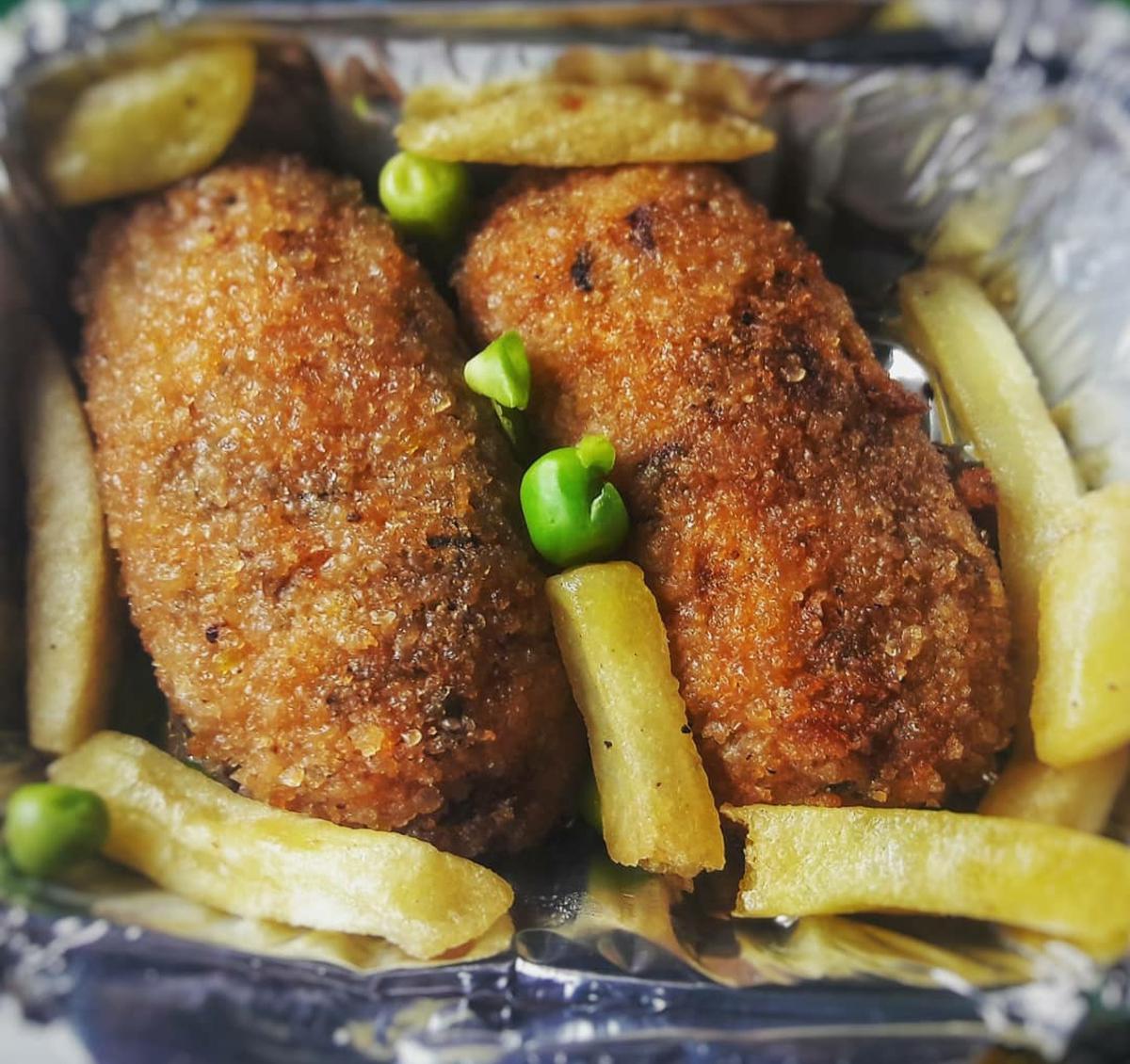
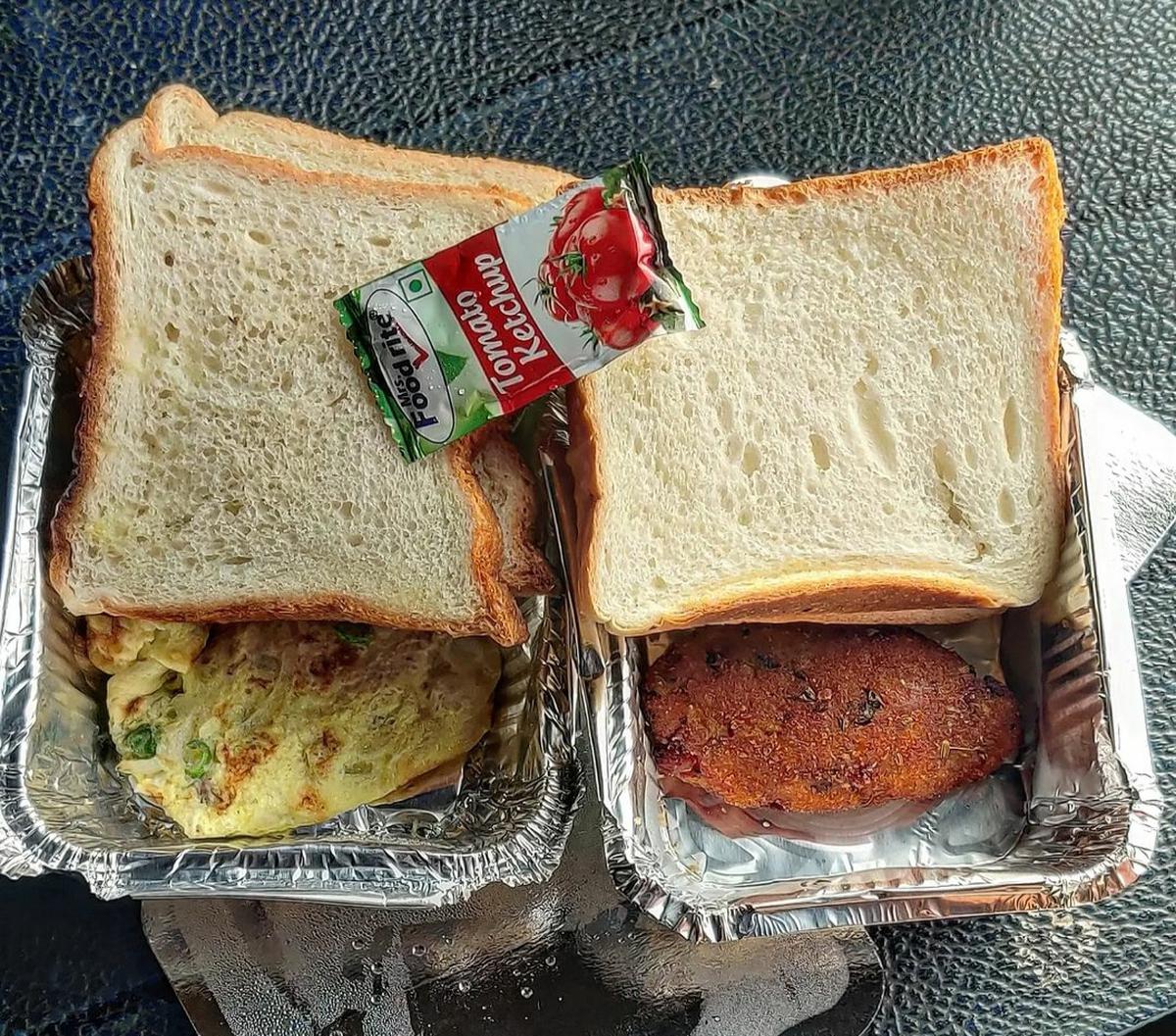
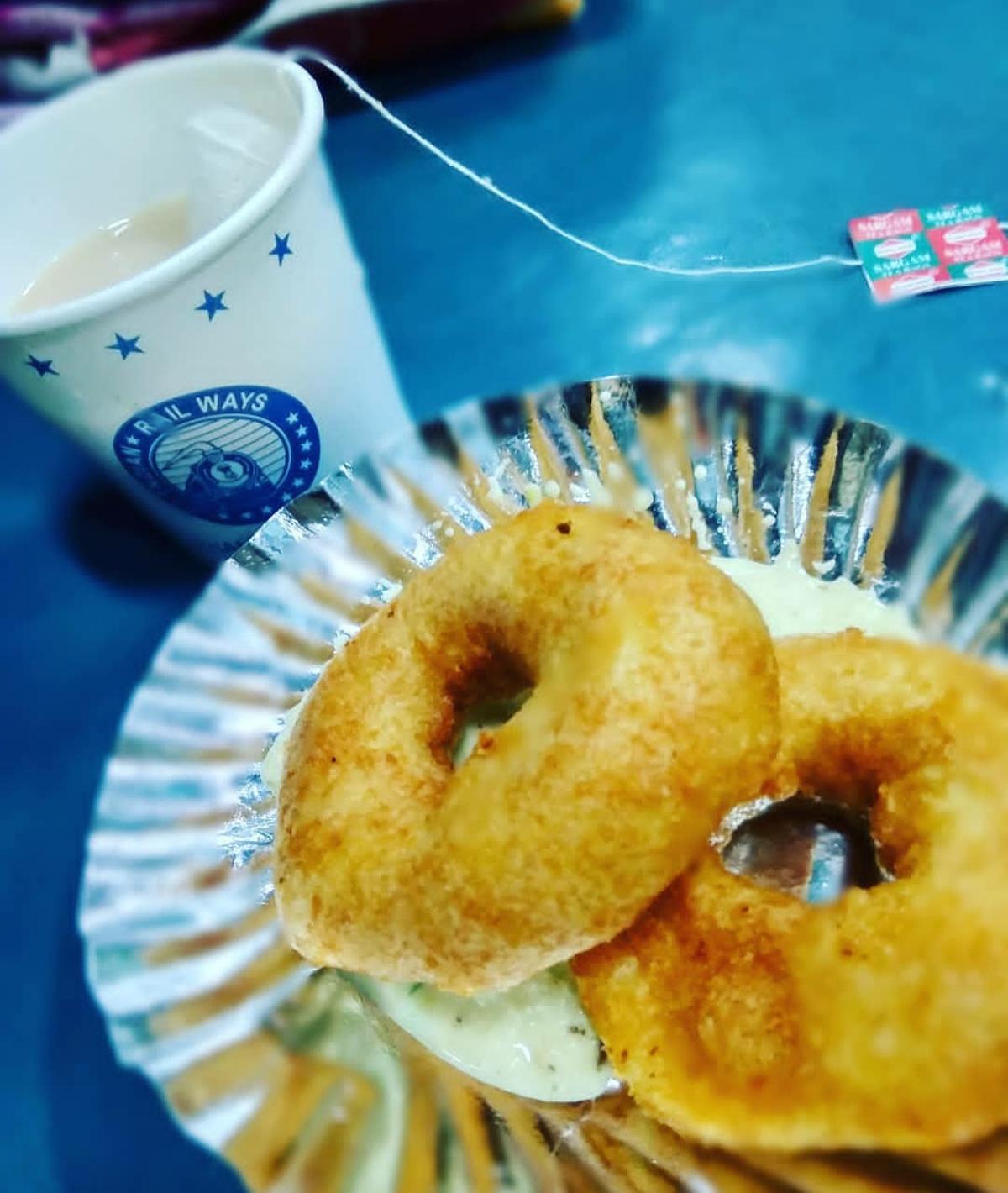
Cutlets, bread-omelette, vada and chai — some food staples of Indian Railways. | Photo Credit: @mahbubrafa, @boletohfoodie/ Instagram
The railway mutton curry, of course, is the stuff of legends and made its way into cookbooks and restaurants alike. Interestingly, according to a 1990 article published by Business India, titled ‘On India’s Land Plane’, mutton was taken off the railway menu because of its possible adulteration with beef.
Old timers wax eloquent over their sepia-tinted memories of the meals-on-wheels that to many are representative of better times. On the contrary, a co-passenger on a recent train journey likened the food that arrived to his berth to the current times — terrible. Over the last few decades, there’s been a constant deterioration of the quality of food served on the railways. Ever so often, there are reports in the media and on social media platforms about the unpalatable food served on Indian trains.
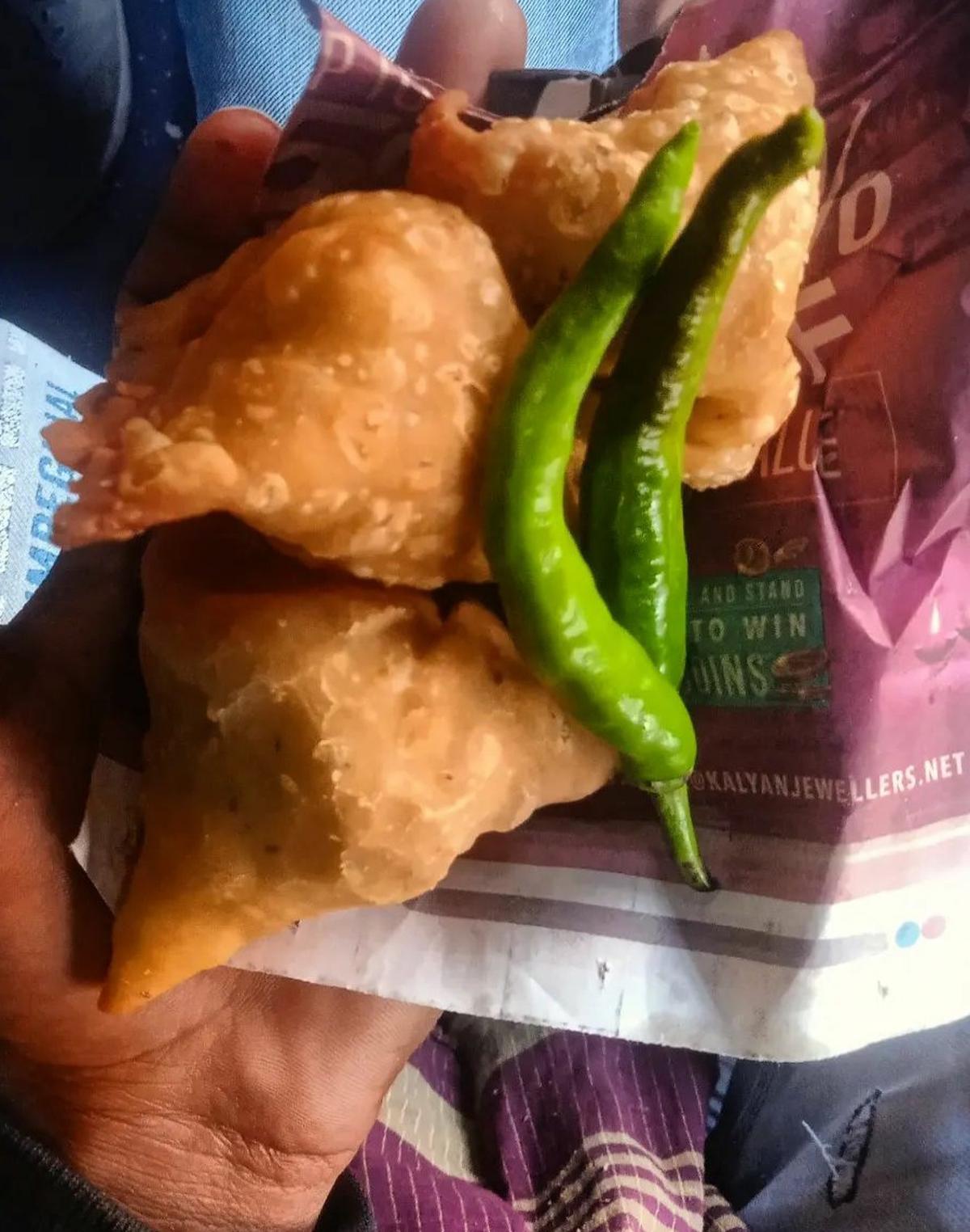
Samosas on the train | Photo Credit: @clubtv_streetfood/ Instagram
Of course, there are stray instances of memorable meals, too. “I could think of these fantastic samosas served on Shatabdi, while travelling from Lucknow to Delhi, and the chhole kulche while travelling from Delhi to Gwalior. But when I say good, I mean by the current standard of food served on trains,” says food anthropologist and writer Shirin Mehrotra, who fondly remembers a time when the best part about journeys aboard premium trains like Rajdhani and Shatabdi was that they kept serving tasty titbits every few hours.
Of course, there are the roving vendors with their repertoire of tasty treats — from mouth-puckering chaat to local sweetmeats — that still make train rides memorable. “I had the most amazing sattu kachauri while travelling from Kolkata to Durgapur once,” says Mehrotra.
But the disappointment around food offered by the railways is rife. “Air travel on certain routes is cheaper than trains. Most people prefer flying in a low-cost carrier to long train journeys, so the food and services are on a decline,” says YouTuber Harkeerat Singh. An intrepid traveller, Singh says that trains that service busy routes typically serve distinctly better food.
Millets in the mix
Over the years, the Indian Railway Catering and Tourism Corporation (IRCTC) has introduced new features and initiatives to shake things up. A relatively recent one enables passengers to book their meal online, to be served at their berth at the station of their choice.
Incidentally, back in the 1920s, first-class passengers on Indian trains could telegraph for food and refreshments to be served to them at the station of their choice. IRCTC’s e-catering service offers a list of restaurants and catering outfits that serve everything from Domino’s pizza to multi-course thalis and certified sattvik meals.
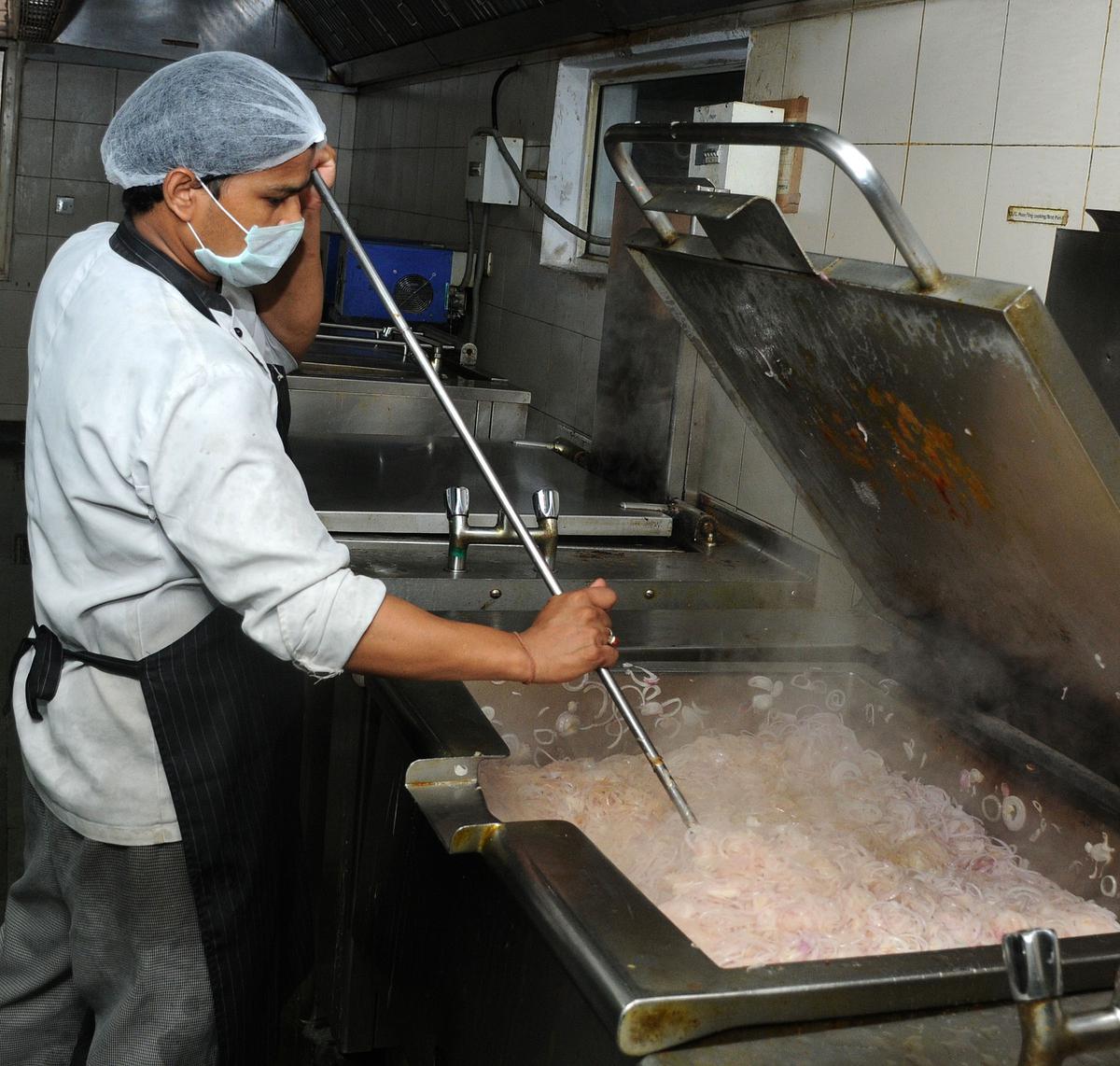
Meals being prepared at the IRCTC’s central kitchen in Noida, July 2015. | Photo Credit: Ramesh Sharma
Besides, there’s an elaborate a la carte menu and customised offerings for infants and diabetics. The menu also shines a spotlight on millets, serving up everything from ragi kheer to sorghum laddoo. IRCTC has renewed its focus on regional food on trains, particularly on the much-hyped Vande Bharat Express, to be loaded from IRCTC kitchens enroute. The menu for each train is a crash course on the region’s food. The cyclic menu on the recently flagged-off Chennai-Coimbatore Vande Bharat Express features everything from pongal, idiyappam and vada, snacks like kai murukku or milage thhattai to sweet dishes inlcuding kesari bhaatand sakkara pongal. For dinner, expect Chettinad-style curries and the coconut-rich kozhi varutha kuzhambu (roast chicken curry).
The Vande Bharat Express between Visakhapatnam and Secunderabad will serve its guests Andhra specialties such as chicken cooked with gongura or sorrel leaves, and dosakaya pappu, lentils cooked with yellow cucumber.
Purushottam D., a Mumbai-based finance professional who travels by train often, says, “On a recent journey from Mumbai to Solapur, we were served Maharashtrian staples such as aamtiand bhakri-pithla and batata wada. I think it’s a great way to promote regional food, but there must be improvement in the quality and taste.”
Mehrotra too welcomes the idea of serving regional food on trains. “It’s all good as long as they maintain a certain standard,” he says.
The legendary railway curries, roasts and puddings are things of the past but maybe this will be the dawn of a new railway cuisine.
The author is an internationally published food and culture writer who shuttles between Kolkata and Mumbai.


COMMents